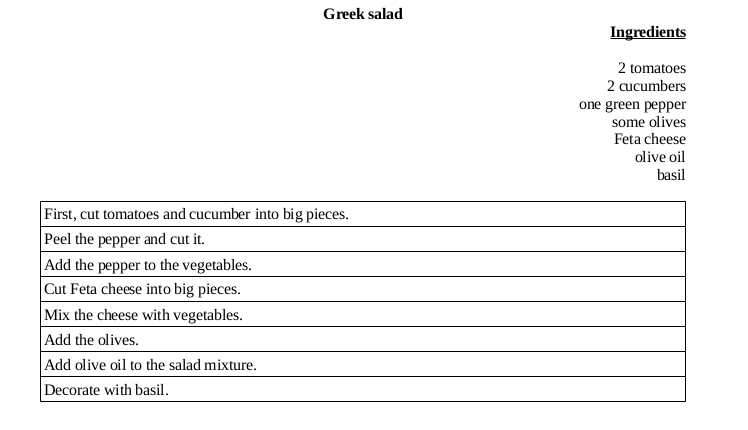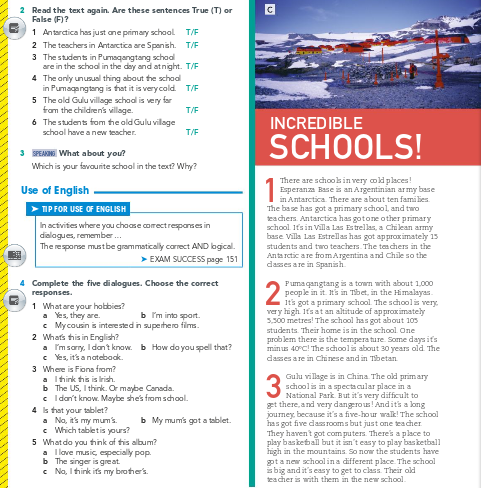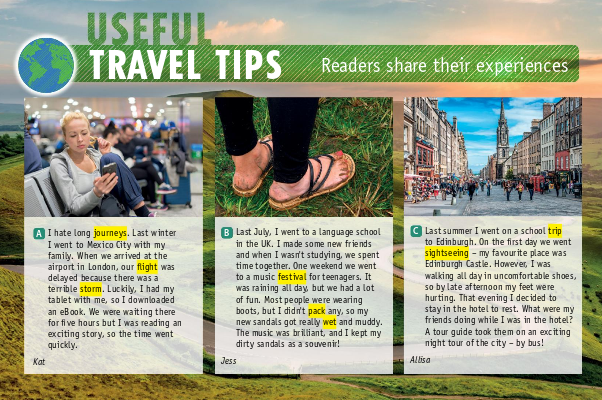Teaching low-level teenagers can be a real struggle. On the one hand, you already can’t base your lessons on techniques and activities for young learners. On the other, teenagers don’t seem ready for “real work” as some of them have a very limited command of English, or probably none. In today’s article, you will find 5 rules of teaching teens who are just starting their journey of learning English.
Grade language
When we teach lower-level students, we are often tempted to use L1 because it’s too hard for the learners to understand natural stretches of connected speech. The solution is simple: graded language. By using graded language, teachers adapt what they say to the level of the learners. Some basic principles of grading language are these:
- Slow down. Break long sentences into shorter meaningful chunks. Repeat, if necessary.
- Opt for simpler grammar and vocabulary. Watch carefully the structures you are using, especially during the first couple of months. It’s easy to overwhelm a beginner. If a teenage student doesn’t understand you, it will lower their motivation.
- Support your speech with body language. Add miming and gestures when you feel this to be necessary. They will provide teens with extra support and will help visual learners a lot. Gestures are a great tool for supporting instructions, while miming can provide the meaning of a word or even a situation.
Establish the routines
Teenagers who are just starting to learn English must feel safe and comfortable in the classroom. During the very first lessons try to set the rules and teach them some basic phrases and classroom language like “Open your book, please” and so on.
Use some signal words and phrases to indicate important moments of the lesson. If you want to praise students, stick to no more than a couple of expressions first. They should know that if, for example, they’ve done something right, you say “Good job!” or “Well done”. Leave the variety for later.
Well-developed routines are motivating: teenagers feel that they can easily understand some phrases. They also help you structure the lesson and move smoothly from one stage to another.
Provide models and scaffold
Scaffolding is giving assistance to students with the tasks that seem too challenging for them. Visual scaffolding in the form of pictures, words and whiteboard notes is a great way to provide input and to create mental clues for better memorization.
With lower levels, it is especially important to leave target vocabulary and grammar on the board throughout the whole lesson. Students will feel more confident and less anxious when they have some visual clue to rely on. Also, every time you deal with speaking and writing activities, think of a model which your teens can see. For example, the task below was used with my Elementary group. We were doing the unit on cooking and had to write a recipe at the end. The coursebook offered just some target vocabulary, including various verbs like “add”, “peel”, “mix” etc, but the model recipe looked too complicated for that particular group. So, I prepared some easier recipes, cut them into pieces and asked the students to put the strips in order. I didn’t give out the ingredients and the name of the dish, though. When they finished, they tried to guess the dish. Then I gave them the original recipes so that they could check themselves. After that, every student had a suitable model and we moved to the writing part. They found it much more comfortable and turned to the models a lot.

You can read more about scaffolding here.
Use drills
Drills are something that we might ignore with our higher-level students. However, they are essential for lower-level teens. First, drills help learners remember things better. Second, beginner teens are sometimes shy to read out loud or speak as they aren’t sure about their pronunciation. Drilling provides them with proper models and, done in pairs or as a whole group, lowers stress. Even if you work one-to-one, you can try out some drills with your teens:
Emotional drill. You can ask students to repeat target words and phrases, using different emotions. So, they can say something in a happy or an angry way, as if they are sleepy, tired or nervous. They can also drill word depending on their attitude: “I’m saying a word. If you like it, repeat it with your happy voice, if not — sadly / angrily. Meat! Fish! Soup!”
Substitution drill. The idea of a substitution drill is to practice one or more words change during the drill. It helps students acquire and retain grammar structures better. It also works well when you work on error correction. For example, if students tend to misplace ‘very much’ in a sentence and put it in the middle, you can try this:
You: Tom loves football very much. Hockey.
Students: Tom loves hockey very much.
You: Ballet.
Students: Tom loves ballet very much etc
Transformation drills are great when you need to drill grammar structures. You say a sentence and students have to transform it into a negative or interrogative form.
You: Sarah cooks lunch.
Students: Sarah doesn’t cook lunch.
You: I drive to work.
Students: I don’t drive to work etc
Jazz chants can also be a useful form of drilling. You can read more about them here
Give a proper amount of challenge
Your students are teenagers, not kindergarteners. They are fluent in their native language, have analytical skills and can apply logic. They will definitely feel it if you start oversimplifying the tasks or speaking unnaturally slowly. Don’t be afraid to use the language that is new to learners. If they don’t know Past Simple yet, it doesn’t mean you can’t start your lesson with “How was your weekend?”.
Developing and editing tasks, try to combine some super easy questions to motivate complete beginners or less academically gifted students and bonus questions for fast finishers and high achievers. The examples of bonus tasks can be the following:


Bonus: choose 4 words that you like from the text. Make an example with each of them.
e.g. approximately – There are approximately 800 pupils in my school.

Bonus: use your phone. Google and find 2 interesting facts about Mexico City, OR the UK, OR Edinburgh.
Last but not least – don’t forget to enjoy. Working with low levels is extremely rewarding as every tiny step is clearly seen, every smallest improvement makes a huge difference. Their fluency develops with every lesson and their knowledge expands fast. Walk this path together with your teens!






 Вероника Аветисян
Вероника Аветисян 
 Маргарита Аветисян
Маргарита Аветисян 


